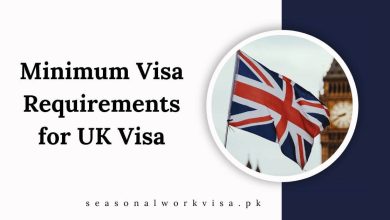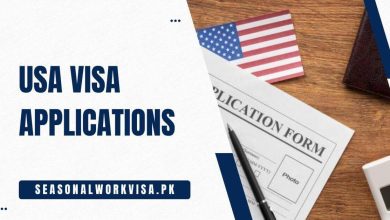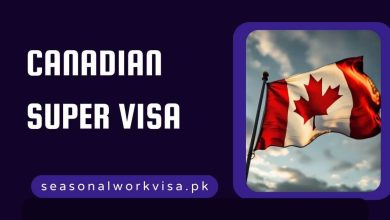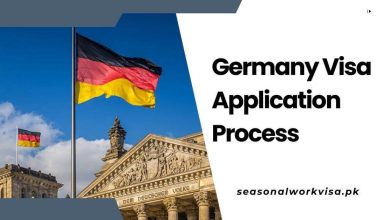Canada Work Permit 2025 – Convert Visitor Visa to Work Visa
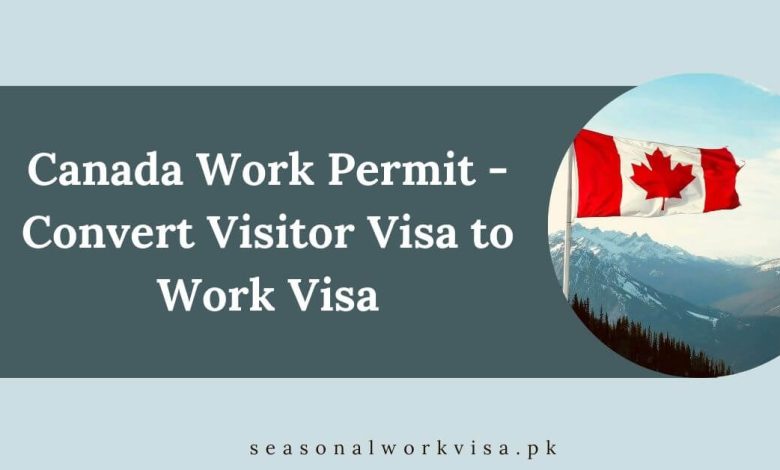
If you are considering traveling to Canada on a guest visa and subsequently converting it to a work permit, it is imperative that you comprehend the complexities and aspects of the process. The process is not straightforward, and success is not guaranteed, despite the fact that it is possible to submit an employment application that is permissible from within Canada under specific circumstances.
Visitors from around the world are drawn to Canada by its diverse attractions and dynamic culture. There are numerous individuals who briefly tour the country in order to investigate its common excellence, participate in its rich heritage, or visit family members. Nevertheless, the transition from a guest visa to a work permit offers potential advantages for individuals who wish to extend their stay for professional purposes.
This comprehensive analysis explores the complexities of transitioning from a Canada guest visa to a work permit. We have acquired all the necessary information, including the capacity to understand the primary distinctions between these visas and the seamless preparation of the application.
Check Also: USA Visitor Visa – Requirements & Application Process
Difference Between Visitor Visa And Work Visa:
It is crucial to comprehend the distinction between a work visa and a visitor visa in Canada at the outset.
- Tourism Visa: This visa is designed for individuals who need to enter Canada for the purpose of visiting family and friends, for leisure, or for tourism. It is exclusively for non-work purposes. It is illegal to engage in employment in Canada while holding a visitor visa, as it is intended for temporary purposes.
- Work Visa (Work Allowance): For individuals who require legal employment in Canada. You may either work for a specific employer or operate as a self-employed individual, contingent upon the conditions of your work visa.
Your work credentials may be renewed provided that you meet specific criteria. Furthermore, it is possible to submit an application for permanent residency or citizenship in Canada.
The conversion of a Canada guest visa to a work visa necessitates the creation of specific reports that specify the qualifications and expectations. These may include:
- Job Offer Letter: A formal letter of employment from a Canadian manager that specifies the position, responsibilities, and conditions of employment.
- Labor Market Impact Assessment (LMIA): In certain circumstances, managers may require an LMIA to substantiate the need for external specialists and the inaccessibility of Canadian citizens or permanent residents.
- Proof of Capabilities: Reports that confirm the capabilities and significant work experiences of the individual, ensuring that they meet the job requirements.
- Valid Visa: A visa that is valid for a period that exceeds the intended duration of the stay in Canada.
- Reserves Proof: Provide evidence of financial stability sufficient to sustain oneself and any dependents during one’s stay in Canada.
- Medical Examination: The duration of the stay and the country of origin may necessitate a medical examination to ensure admission to Canada.
Eligibility:
In order to optimize this approach, it is imperative to verify several items from the qualification checklist:
- Valid Visitor Status: You are a lawful visitor in Canada.
- Job Offer in Hand: An employment offer has been extended to you by a Canadian manager. This offer must be either exempt from the Work Showcase Affect Appraisal (LMIA) or be LMIA-exempt.
- Valid Guest Status: Candidates must be in Canada on the recommended status or possess a substantial guest visa.
- Job guarantee: A authentic job guarantee from a Canadian employer who is prepared to offer assistance with the work permit application.
- Migration Law Compliance: Adherence to Canadian movement laws and controls, including tolerability criteria.
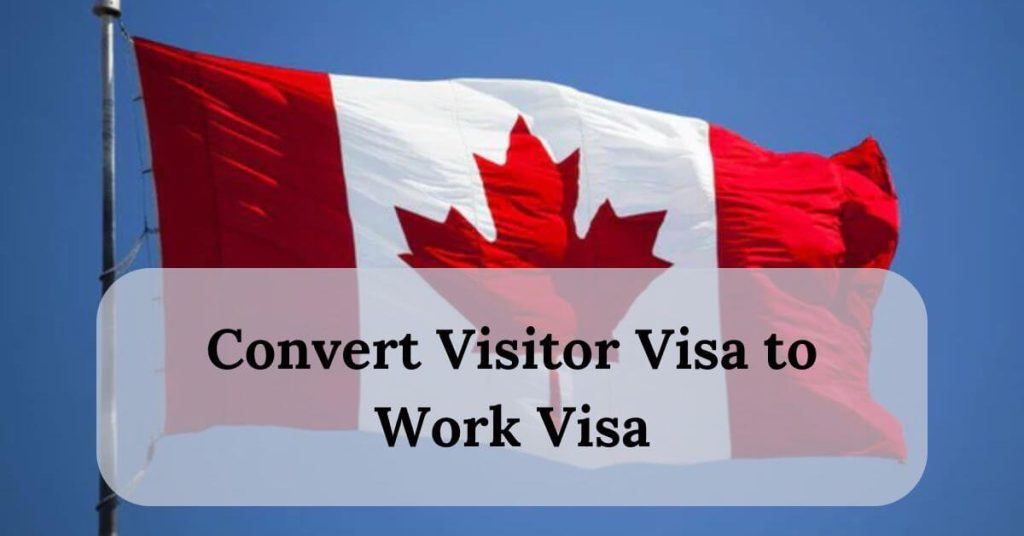
Steps to Change over Canada Visit Visa to Work Permit:
There are several conventional methods for converting a traveler visa into a work permit, including:
- Submit an application for employment in Canada: At the outset, it is essential to secure employment that requires a Canadian work permit. Furthermore, obtain a job offer from a Canadian manager who is prepared to provide support for the work permit application.
- Acquire an Endorsed Offer Letter with LMIA (Work Advertise Affect Assessment): The company that is advertising the employment must have an LMIA endorsement, which certifies that they are authorized to employ external workers.
- Collect Crucial Documentation: As previously mentioned, compile the desired records, ensuring that they are valid and authentic.
- Apply for the Work Allowance: Submit an application for the work permit after you have obtained employment and collected the required documentation.
- You may submit a paper application at a Visa Application Center (VAC) or complete the application online through the Migration, Displaced People, and Citizenship Canada (IRCC) website.
- In certain circumstances, individuals may convert their visitor visa to a work permit without complying with the standard Work Advertisement Impact Assessment (LMIA) process.
- This alternative is especially pertinent for specific categories, such as the Worldwide Versatility Program (Pixie), which offers opportunities for occupational advancement across borders to workers.
- The Pixie system’s LMIA exemptions are intended to streamline the process for qualified individuals by obviating the necessity for a thorough labor advertisement investigation.
- These exclusions are frequently justified by global assertions, complementary understandings between Canada and other nations, or other critical considerations that foster financial development and cooperation.
- By utilizing these exceptions, qualified individuals can consistently transition from visiting status to a work permit, thereby allowing them to contribute their abilities and skills to the Canadian workforce without the authoritative burden of an LMIA assessment.
- In order to successfully convert their guest visa to a work permit, applicants must meet the specific qualification criteria and documentation requirements associated with LMIA exemptions under the Universal Versatility Program.
If you are not familiar with the requirements for a working occasion visa in Canada, we suggest that you visit our official website for comprehensive information.
Benefits of Canada Work Permit:
- Legal Work Authorization: A work permit in Canada enables foreign nationals to legally work in the country while retaining the same labor rights as Canadian employees.
- Pathway to Permanent Residency (PR): The Canadian Experience Class (CEC), Provincial Nominee Programs (PNPs), and Express Entry are among the programs that many work permit holders have access to in order to become eligible for PR.
- High-Paying Employment Opportunities: Canada provides competitive salaries in a variety of sectors, including healthcare, engineering, IT, and specialized trades.
- Social Security and Employment Benefits: Work permit holders may be eligible for benefits such as Employees’ Insurance (EI), pension plans, and workers’ compensation.
- Healthcare Accessibility: Certain provinces offer free or subsidized healthcare to work permit holders, thereby guaranteeing access to medical services and treatment.
- Work Experience in Canada: Acquiring work experience in Canada enhances your career prospects and increases your eligibility for immigration programs.
- Opportunities for Spouses and Children: Numerous work permits permit spouses to register for an open work permit and enroll their children in public schools.
- Job Security and Stability: Canada’s labor laws are robust and safeguard employees from exploitation and unjust treatment.
- Multicultural Work Environment: Canada’s workforce is diverse, providing an inclusive and welcoming environment for international workers.
- Flexible work permits: The Open Work Permit is one of the work permits that enables you to work for any employer in Canada without being bound to a specific company.
- Access to Public Services: Work permit holders are eligible for high-quality public services, such as transportation, education, and community support programs.
- Opportunity to Discover Canada: While employed in Canada, you will have the opportunity to discover the country’s distinct cultures, vibrant cities, and stunning landscapes.
- Professional Development and Career Advancement: A significant number of Canadian employers provide training, skill development programs, and career advancement opportunities.
- Relocation Assistance from Employers: Certain organizations offer relocation assistance, which encompasses travel expenses, lodging, and settlement assistance.
- Entrepreneurial and Business Opportunities: In Canada, work permit holders have the option to establish their businesses, apply for startup visas, or pursue entrepreneurship after acquiring work experience.
Conclusion:
The brief approach expansion may serve as an incentive to transition from a guest visa to a work permit in Canada. Candidates can investigate this journey with confidence and clarity by understanding the qualification criteria, organizing the essential records, and adhering to the predetermined procedures.
It is essential to remember that counseling with authorized migration specialists can provide personalized support that is tailored to your unique circumstances, thereby facilitating a seamless transition into the Canadian workforce.
Frequently Asked Questions:
Can I convert my visitor visa to a work permit in Canada?
Yes, under certain conditions, you can apply for a work permit from within Canada if you receive a valid job offer from a Canadian employer with a positive LMIA (Labour Market Impact Assessment) or an LMIA-exempt job.
What are the requirements to apply for a work permit from a visitor visa?
You must have a valid visitor status, a job offer from a Canadian employer, and meet the eligibility criteria for a work permit, including skills, experience, and possibly an LMIA approval.
How can I apply for a work permit while on a visitor visa?
You need to apply online through the Immigration, Refugees and Citizenship Canada (IRCC) website, submit required documents, and wait for approval before starting work. It’s recommended to consult an immigration expert for guidance.
